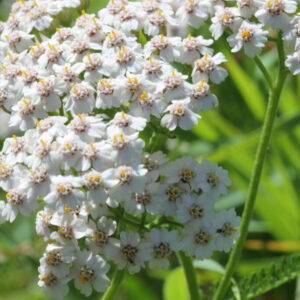Family: Asteraceae/ Daisy/ Aster/ Sunflower
Ecology/ Botany:
This perennial grows almost anywhere in the open but prefers Interior Douglas Fir and Engelmann Spruce- Subalpine Fir forest zones. It has fine, feathery leaves to allow for maximum light filtration and a strong stalk to keep it upright.
Medicinal/ Traditional/ Other Uses:
It is a blood vessel tonic and slightly bitter digestive stimulant. It improves blood flow to the body periphery and blood perfusion of tissues. It induces sweating to break a fever. Secwepemc (Shuswap) people have burned the leaves as a mosquito repellant. They and other Indigenous nations have used its various parts as medicines. The root has been chewed to ease toothaches, bathed in as an infusion for Rheumatism, or decocted to drink as a tonic. Also, the flowers and seed heads have been infused to drink for muscle spasms (cramps) and premenstrual syndrome. It is known for its ability to stop bleeding topically. The leaves are astringent and have been used as a poultice for wounds, nosebleeds, or headaches. The flower essence has been used to increase the psychic shield and protection of energy.
References/ Other useful links:
Parish, Coupe, Lloyd. 1996. Plants of Southern Interior British Columbia. B. C. Ministry of Forests and Lone Pine Publishing.
n.d. “Community Herbalist Program/ My Account.” Pacific Rim College Online. Accessed 12 2020. https://pacificrimcollege.online.
E-FLORA BC: ELECTRONIC ATLAS OF THE FLORA OF BRITISH COLUMBIA




